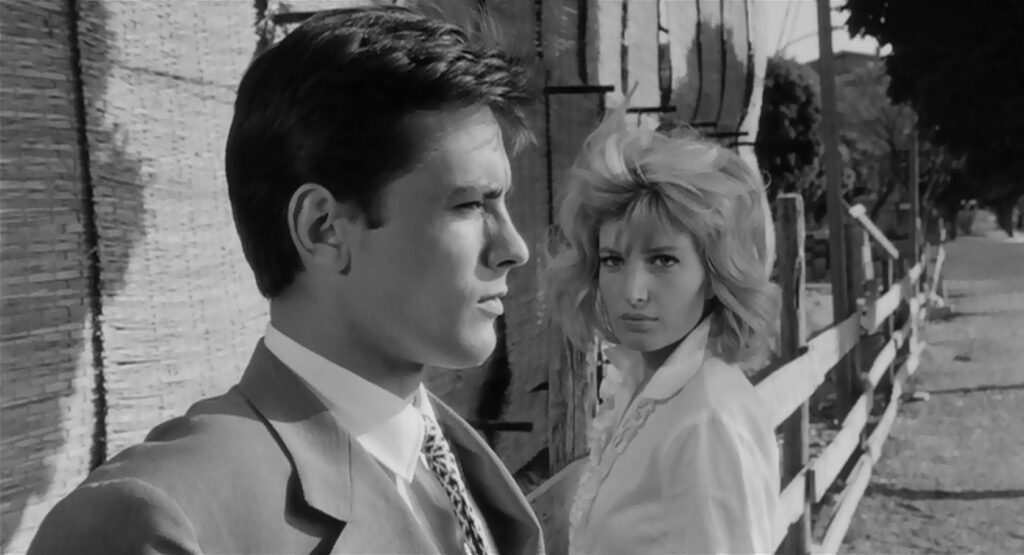
L’eclisse
1962, directed by Michelangelo Antonioni
The big surprise at the end of L’eclisse, in the famous nightfall sequence, is that the film seems to have abandoned its plot and characters. Have they been forgotten? Not exactly. As ambiguous as the ending is, it’s also a logical continuation of the story because it takes us to where Vittoria and Piero, in the previous scene, had planned to meet at 8 p.m. As seven minutes and eighteen seconds roll by, the sky gradually darkens and the street lamps turn on, so on a late July evening in Rome it would seem to span the moment of their expected date. Neither one has shown up, and this should not be too surprising. Not only have both characters shown ambivalence toward their relationship, but the last we saw of Vittoria was in front of the same grille where earlier Piero had broken a date with another woman. It’s as if she were then making the same decision.
Moreover, these last seven minutes are intricately connected with the rest of L’eclisse, because almost every detail in the montage is recognizable. We have seen the same street corner a few times before, like when Vittoria and Piero met there at the start of the fifth day. Their rendezvous point is by a construction site across from the velodrome, and in those final minutes we see the same scaffolds, concrete blocks, and trees that the camera had lingered on before. The same nurse goes by with a baby in a stroller, and the same horse-drawn carriage passes. Even the airplane contrails harken back to the scene at the Verona airport. At one point a man who could be Piero walks into view, but he turns out to be a stranger. Shortly thereafter a woman with Vittoria’s blonde coif comes up the sidewalk, but she turns and we realize it’s someone else. We have surely all had such experiences of false recognition, so it rings true. The utter familiarity of everything gives a feeling of inarguable truth to the ending. It may not be what we expected, but it hits with vividness because it’s all so familiar.
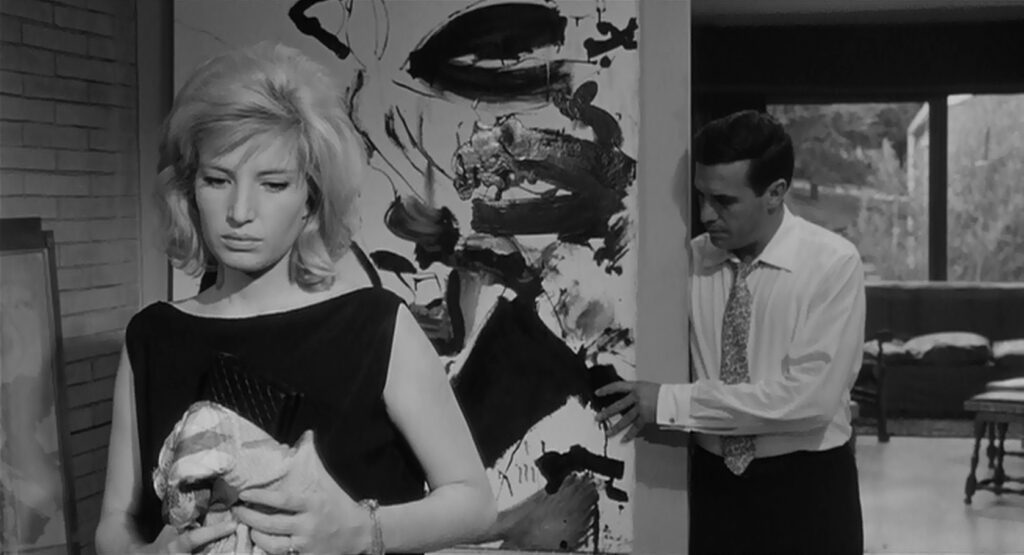
If the finale of L’eclisse were detached and screened separately as a short film, it would look (except for its extraordinary cinematography and music) like any number of avant-garde student films. People would probably consider it “arty” or “experimental”, and its interpretation would be up for grabs. But the scene is not detached from the rest of L’eclisse, and it would be a mistake to treat it or the whole film as some arty intellectual exercise. The ending is meant to be felt, and its effect should be within the reach of an ordinary viewer. However, to appreciate the effect of the ending it’s necessary to absorb the rest of the film as it is presented. Anyone who watches L’eclisse with preconceptions or bad viewing habits will be misled or bored or distracted. In fact, it would be fair to say that the entire film is a preparation for viewing the last scene. This can be stated even more broadly: like all of Antonioni’s best films, L’eclisse is a lesson in seeing.
Our guide on this journey is Vittoria. She is particularly well suited to guide us, because she has no defined point of view of her own. We never know her motives or her thoughts, and she admits that she doesn’t know them either, which frustrates the two men in her life. The fluidity of her point of view means that neither she nor the film tries to force any particular point of view on the audience. We must react to the material in our own way, drawing our own conclusions.
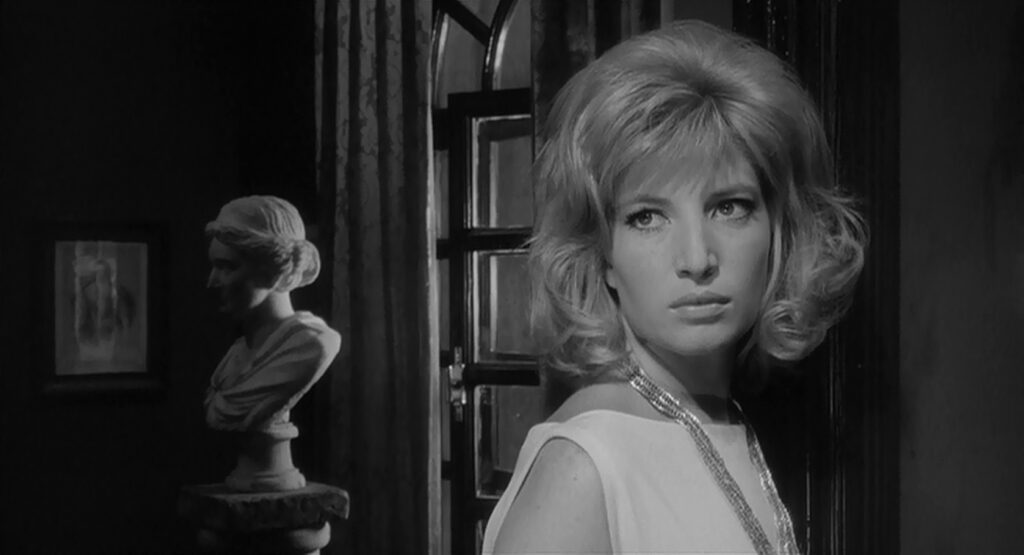
Most movies use emotion to define a point of view. L’eclisse is no less emotional than most popular films; in fact there is more anxiety, elation, and despair on display in the two stock exchange scenes than you could find in most melodramas or action films, but the emotion is not presented in a way that draws the viewer into it. Everything is totally matter-of-fact. The same is true of Vittoria’s love life. Over six days she goes through the same range of feelings and events you would find in many romances, but it’s not made to elicit audience participation. As a whole the film does nothing to seduce the viewer or to make anyone want to watch it in the usual ways that films hook people. To get anything out of L’eclisse, the viewer must want to enter it.
Vittoria is introduced playing with an empty picture frame. She has positioned it on a table in Riccardo’s living room and is idly arranging objects behind it to create a kind of still life. She removes an ashtray and shifts a small modern sculpture, then she gives up quickly. Through the rest of the film she will frequently look through windows and doorways, briefly trying out various points of view. At Marta’s apartment, inspired by pictures of Africans, she puts on a costume and pretends to be African herself. Her first passionate advance toward Piero is a kiss through a window pane. Most of the other characters have clear points of view: the stockbrokers, the airplane pilots, Vittoria’s friends; but she never seems to settle on a single frame for viewing the world. The last time we see her, in front of that metal grille near Piero’s office, she is looking up against a beautiful backdrop of tree canopies before the film cuts to the last scene.
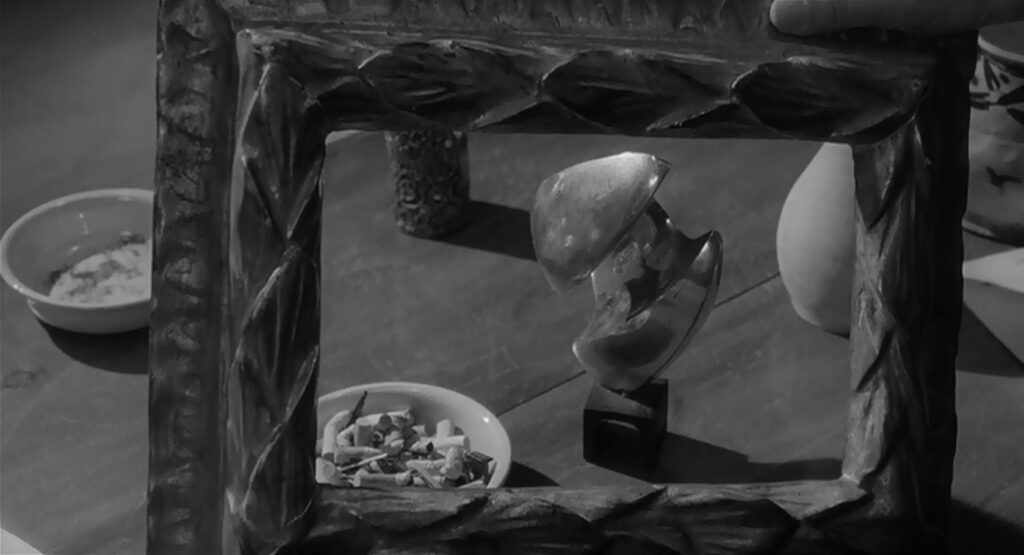
There is, therefore, a kind of progression in her journey. She has gone from looking at the world through an artistic frame in Riccardo’s house to direct immersion in the real world. The movie follows a similar progression, from the artiness of the first scene to the natural and ordinary reality of the last scene. L’eclisse gradually takes us beyond point of view to a position where we can see the world with an unexpected fullness.
There is one other character whose point of view is as enigmatic as Vittoria’s. After the market crash in the second stock exchange scene, Piero indicates to her a man who has just lost 50 million lire. She follows the man to a pharmacy where he buys some pills, then to an outdoor café where he downs them with mineral water. The man leaves, and Vittoria picks up a scrap of paper he had doodled on… but instead of some clear emotional revelation like almost any other movie would show, he leaves only a sketch of a few simple flowers. The only thing this reveals is his similarity to her – after her initial visit to the stock exchange Vittoria had purchased a small slab of rock with a fossil of a flowering plant.
Vittoria’s discovery of the investor’s little sketch occurs about halfway through L’eclisse, and the film hinges on it. Her relationship with Piero begins there, and the movie’s tone shifts from the loosely connected series of scenes in the first half to a more focused and consistent series of meetings with Piero in the second half.
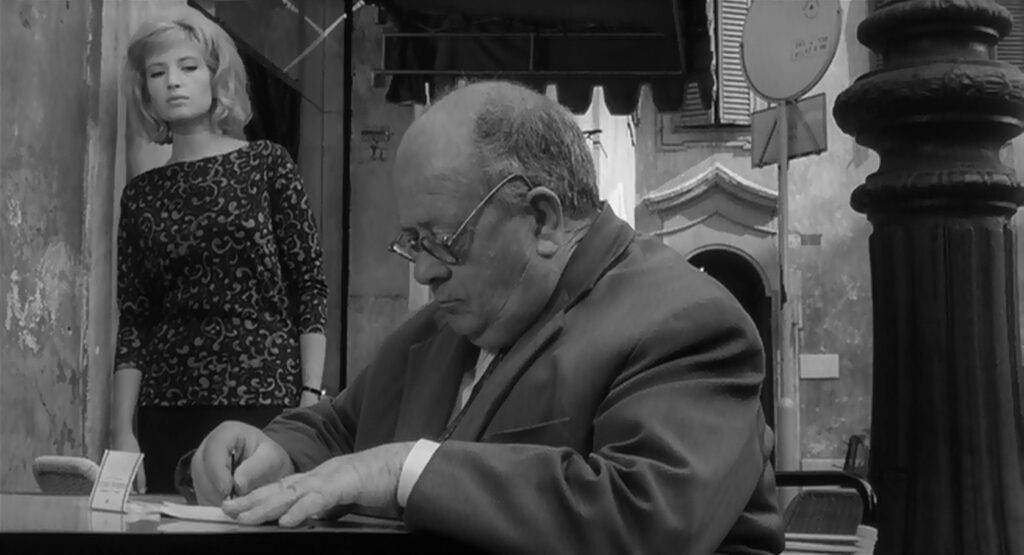
Let us consider now what Vittoria experiences over the course of L’eclisse. In the opening scene she is struck by the loss of her youthful happiness. When she met Riccardo at age 20, she says, she was happy, and it’s ironic that Riccardo tells her, now that she is unhappy in the relationship, that he had wanted to make her happy. Obviously this man looks at her not for what she is, but as a validation of his own worth. When he is displeased with her he will not even look at her directly. This happens three times: when he sits in his armchair staring straight ahead, when he walks past her after shaving, and when he leaves her at the gate to her apartment block. Now she is resolved to end the relationship, and over the next few scenes she distracts herself with the visit to Marta, the flight to Verona, and two trips to see her mother at the stock exchange.
In the first half Vittoria is essentially unmoored, wandering from one thing to another. When she picks up the paper with the flowers she realizes that somebody else is going through life like she is, with no discernible point of view. Now, no longer feeling totally out of place, she is ready to change course and try something new, and she becomes receptive to Piero’s advances. She likes him because he is different from Riccardo. Rather than obsessing over her, Piero is loose and uncommitted. She is surprised but not entirely displeased when Piero is so blasé about the drunk’s death in the submerged Alfa Romeo. But being unlike Riccardo is not enough to sustain a love affair, and when she leaves Piero the last time she finally looks up at the trees, returning to the childlike wonder she had lost during her relationship with Riccardo. The ending puts us in a position to look at the world with the same wonder: not to marvel at the world because it is so dramatic or spectacular, but to see an everyday street corner with total childlike freshness.
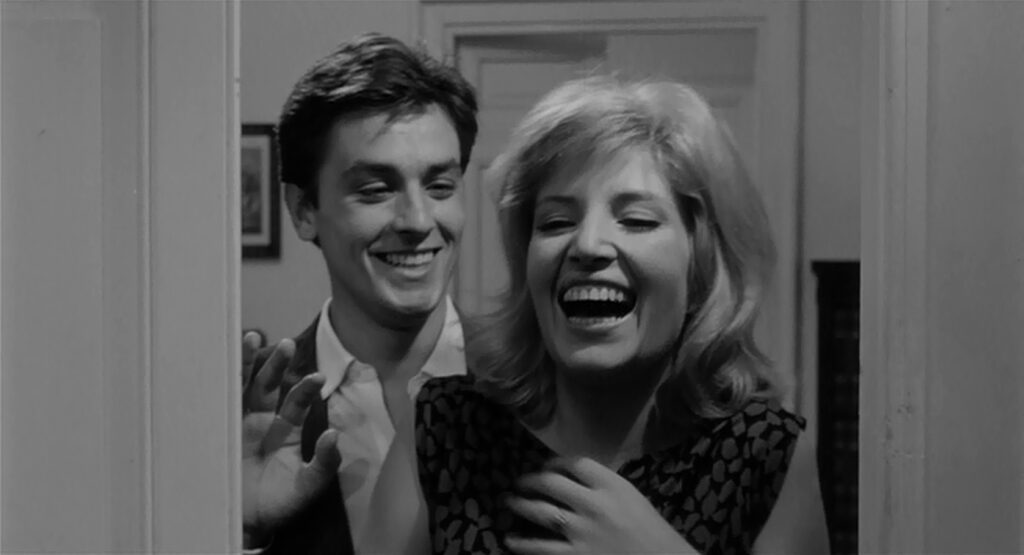
To a cynic, the act of wonder might sound like a kind of mystical experience, beholding some invisible sacred layer of existence. In contrast to this view, L’eclisse takes a radical position that wonder results from seeing the world as it actually is, not as it should be or as someone wants it to be. The film introduces many of the modern world’s most pressing problems – racism, substance abuse, capitalist greed – without indicating what anyone should think about them, but because they are shown in their essence it is possible to approach them with insight. For example, from the scene in Marta’s apartment we can see that there are two contrasting types of racism: one which exoticises people and one which treats them with contempt. Just as Marta tells Vittoria to knock off her dancing and blackface act, Vittoria and Anita reject Marta’s slurs.
In the final scene the single most pressing world problem of 1962 is introduced in a newspaper headline about the danger of nuclear war. The movie does not try to address this topic directly by asserting a particular point of view. However, for anyone who has watched closely, it should be apparent that even nuclear war stems from a problem of vision – that our planet would never be at risk of global war if potential aggressors viewed the world with the sense of wonder that the film builds toward.

The point of L’eclisse is encapsulated by an irony in one of its most memorable scenes. When Vittoria first goes to the stock exchange, the frenzied trading stops for a minute in the midst of a small market boom to commemorate the recent death of a trader. During the moment of silence Piero irreverently whispers that on the trading floor a minute is worth billions. To the dead man, however, a minute of time would be beyond any measure of price. The inappropriate timing of Piero’s remark calls attention to this. It’s a powerful reminder that time itself is priceless, and it prepares for the epiphany of the last scene, which presents a vision of the world outside the framework of economic valuation.
CONNECTIONS:
Band of Outsiders – Minute of silence
Gertrud – Extensive play with frames; break-up in the opening scene
Pierrot le fou – Idea that wonder comes from seeing things as they are, not as we wish them to be
Persona – Human narrative combined with seemingly avant-garde passage(s)
Time Walks Through the City – Montage of urban details, including contrails, with visual echoes to create a sense of familiarity
Zabriskie Point – Distinction between two almost opposite kinds of racism
Whity – Dispassionate analysis of racism
The Passenger – Ending leaves the point of view of the protagonist(s)
About Dry Grasses – Sustained attention to the limitations of human perspective